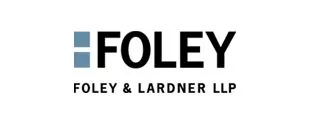It's that time of year when we make resolutions to improve our health, our relationships, our careers, or other areas of our lives. I'm not starting a new diet today (although if I were, the invention described in this patent application could be helpful), but I have been thinking about New Year's resolutions for the U.S. patent system.
Make Diagnostic Methods Patentable Again
It's been nearly six years since the Supreme Court called the patent eligibility of diagnostic methods into question in Mayo v. Prometheus, and two and a half years since the Federal Circuit twisted the knife with its decision in Ariosa v. Sequenom. The USPTO issued guidelines to help stakeholders navigate the newly treacherous § 101 terrain, but when even the Patent Trial and Appeal Board doesn't let applicants follow those narrow paths, it's no surprise that individual examiners find roadblocks where none used to be. Several organizations are working on proposed legislative "fixes,"but any changes to the statute are a long way off. Until then, we struggle to devise intellectual property strategies when it remains possible to patent diagnostic inventions in other major IP markets, including Europe and Japan, but not always Canada or China.
Reduce The Duty of Disclosure Burden
It wouldn't take an act of Congress to reduce the Duty of Disclosure burden. The USPTO could implement revised examination practices and document review procedures that would alleviate the costly and wasteful processes required by the current IDS rules and related MPEP guidance. For example, applicants should be able to cross-cite references from copending applications without having to actually upload copies of the references into each electronic file wrapper. And there's no reason to treat published PCT applications differently from published U.S. applications when they are readily available from the WIPO Patentscope website. And why require applicants to submit references cited in corresponding foreign applications that are readily available—with machine translations—on the USPTO's own Global Dossier website? Or, how about updating the Duty of Disclosure in view of Therasense?
Remind The Public That Patents Promote Innovation, Investment and Job Creation
While it's fun to make fun of ridiculous patents, it's important to remind the public that most patents protect key technologies that drive business growth. Especially in life sciences fields, if patent protection is not available companies may not invest in bringing new innovations to market–and won't hire the scientists, engineers, and sales forces those new products would require. The public should know that a strong patent system is key to a strong U.S. economy–even if a few silly patents get granted.

The content of this article is intended to provide a general guide to the subject matter. Specialist advice should be sought about your specific circumstances.


